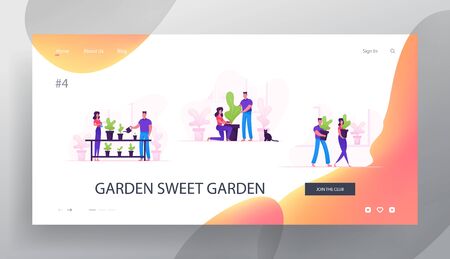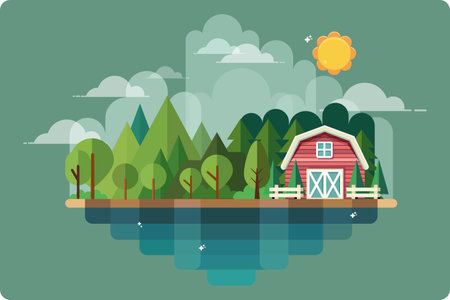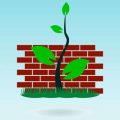Assessing Your Space and Needs
Before you start digging or planting, its important to take a good look at your backyard and think about what kind of garden will work best for your space and lifestyle. Maximizing both space and productivity starts with understanding what you’re working with.
Evaluate Your Backyard’s Size
Start by measuring the total area available for gardening. This helps you decide whether to plant directly in the ground, use raised beds, or go vertical with trellises and hanging planters. Even small backyards can be turned into productive gardens with smart planning.
Check Sunlight Exposure
Sunlight plays a huge role in plant growth. Track how many hours of sun different areas of your yard get throughout the day. Most vegetables need at least 6 hours of full sun daily. Flowers vary—some love full sun, others prefer shade.
| Sunlight Level | Ideal Plants |
|---|---|
| Full Sun (6+ hrs) | Tomatoes, Peppers, Zinnias, Sunflowers |
| Partial Sun (4–6 hrs) | Lettuce, Spinach, Hydrangeas |
| Shade (Less than 4 hrs) | Ferns, Hostas, Mint |
Test Your Soil Condition
Healthy soil is key to a productive garden. You can buy an at-home soil test kit from most garden centers or send a sample to your local extension service. Check for:
- Soil pH level (ideal range: 6.0–7.0 for most plants)
- Nutrient levels (nitrogen, phosphorus, potassium)
- Soil texture (clay, loam, sand)
If your soil isn’t ideal, don’t worry—you can amend it with compost or choose raised beds filled with quality soil.
Identify Microclimates
Microclimates are small areas within your yard that have slightly different conditions due to things like nearby buildings, fences, or trees. For example:
- A south-facing wall might create a warm spot perfect for heat-loving plants.
- A shaded corner may stay cooler and retain moisture better during hot months.
Define Your Garden Goals
Think about what you want from your garden. Are you hoping to grow fresh veggies for your family? Do you love the idea of colorful blooms throughout the summer? Maybe a bit of both? Knowing your goals will help guide your design choices.
| Garden Goal | Recommended Features |
|---|---|
| Vegetable Garden | Raised beds, drip irrigation, crop rotation plan |
| Flower Garden | Diverse perennials, pollinator-friendly plants, color planning |
| Mixed Garden | Companion planting layout, paths for access, seasonal planning |
The more clearly you assess your space and needs upfront, the easier it will be to design a backyard garden that not only fits your property but also brings joy and fresh harvests all season long.
2. Choosing the Right Garden Layout
When designing a backyard garden that maximizes both space and productivity, choosing the right layout is key. Whether youre working with a small patio or a medium-sized yard, picking a smart garden design helps you grow more in less space while keeping everything easy to reach and take care of.
Raised Bed Gardens
Raised beds are a popular choice because they allow for better soil control, improved drainage, and easier access—especially if bending down is tough on your back or knees. You can build them in any size to fit your space, and they help keep weeds at bay too.
Benefits of Raised Beds:
- Improved soil quality and drainage
- Reduces weed growth
- Easier to manage and maintain
- Good for small or uneven yards
Vertical Gardening
If youre short on square footage, go vertical! Vertical gardening uses walls, trellises, hanging baskets, or stacked planters to grow upwards instead of outwards. Its perfect for growing vining plants like cucumbers, peas, and tomatoes or even herbs and leafy greens.
Ideas for Vertical Gardening:
| Method | Best For |
|---|---|
| Trellis | Cucumbers, beans, peas |
| Wall Planters | Herbs, lettuce, strawberries |
| Hanging Baskets | Tomatoes (small varieties), flowers |
| Stacked Planters | Mixed greens, herbs |
Square Foot Gardening
This method divides a raised bed into square-foot sections to organize planting efficiently. It’s ideal for beginners and great for maximizing yields in small areas. You’ll waste less seed and water while keeping everything neat and easy to reach.
Square Foot Gardening Basics:
- Create a 4×4 foot raised bed divided into sixteen 1-foot squares.
- Plant different crops in each square depending on their spacing needs.
- Easily rotate crops seasonally and manage pests more effectively.
Example Plant Spacing per Square Foot:
| Crop | Plants per Square Foot |
|---|---|
| Lettuce | 4–6 plants |
| Carrots | 16 plants |
| Basil | 4 plants |
| Tomato (staked) | 1 plant |
No matter which layout you choose—raised beds, vertical structures, or square foot grids—the key is to match your space with your gardening goals. With thoughtful planning, even the smallest backyard can become a highly productive garden space.

3. Selecting Productive and Space-Efficient Plants
When designing a backyard garden that maximizes both space and productivity, choosing the right plants is key. Focus on varieties that are high-yielding, compact in size, or capable of producing multiple harvests throughout the season. It’s also important to select plants that thrive in your specific USDA Plant Hardiness Zone to ensure healthy growth and consistent production.
Choose High-Yield Crops
Some crops naturally produce more food per square foot than others. These are great options for small gardens where every inch counts. Look for vegetables and herbs known for their productivity.
| High-Yield Crop | Why Its Efficient |
|---|---|
| Tomatoes (indeterminate types) | Produce continuously over the growing season |
| Zucchini | One plant can yield dozens of fruits |
| Green beans (pole varieties) | Grow vertically and produce heavily |
| Lettuce (cut-and-come-again types) | Regrows after harvesting leaves |
Select Compact or Dwarf Varieties
Compact or dwarf plant varieties take up less space while still delivering a good harvest. These are ideal for raised beds, container gardening, or tight backyard spaces.
| Compact Plant | Ideal Use |
|---|---|
| Bush tomatoes | Great for containers and small beds |
| Bush beans | No need for trellising; compact footprint |
| Dwarf fruit trees (e.g., apple, peach) | Can be grown in large pots or small yards |
Use Multi-Harvest Plants
Certain plants allow you to harvest several times during one growing season, making them very efficient choices. These “cut-and-come-again” varieties give more value over time.
- Kale: Pick outer leaves regularly while the plant keeps growing.
- Swiss chard: Harvest leaves as needed without removing the whole plant.
- Herbs like basil and cilantro: Pinch back regularly to encourage new growth.
Match Plants to Your USDA Zone
The USDA Plant Hardiness Zone Map helps you choose crops suited to your local climate. Matching your plant selection to your zone ensures longer-lasting plants and fewer losses due to weather extremes.
| USDA Zone Example | Recommended Crops |
|---|---|
| Zone 5 (e.g., Chicago, IL) | Cabbage, carrots, radishes, peas |
| Zone 7 (e.g., Atlanta, GA) | Sweeter peppers, eggplant, okra |
| Zone 9 (e.g., Houston, TX) | Citrus trees, tomatoes, beans year-round |
Selecting the right mix of productive, space-saving plants tailored to your growing zone can make a big difference in how much food your backyard garden produces throughout the season.
4. Incorporating Functional Design Elements
Designing a backyard garden that’s both beautiful and productive means thinking beyond just plants. By adding smart, functional elements to your layout, you can improve organization, boost sustainability, and make the most of every square foot. Here are some practical additions to consider:
Pathways for Easy Access
Clear, well-placed paths make it easier to move through your garden without stepping on soil or damaging plants. Use materials like gravel, mulch, or stepping stones for budget-friendly options. Paths not only define different zones in your garden but also help with maintenance and harvesting.
Trellises to Maximize Vertical Space
Trellises are perfect for climbing plants like tomatoes, cucumbers, peas, and beans. Growing vertically saves ground space and improves air circulation around plants, which helps prevent disease. You can use wooden frames, metal structures, or even repurposed items like ladders or old gates.
Composting Bins for Sustainable Gardening
A compost bin turns kitchen scraps and yard waste into rich organic matter that feeds your soil. Place it near your garden for convenience but away from sitting areas to avoid odors. Composting reduces waste and keeps your garden healthy naturally.
Water-Saving Irrigation Systems
Efficient watering is key to a productive garden. Drip irrigation systems deliver water directly to plant roots, reducing waste and promoting deeper growth. Soaker hoses are another great option for saving water while keeping soil evenly moist. Consider adding a timer to automate watering and save time.
Quick Overview of Functional Elements
| Element | Main Benefit | Recommended Materials/Tools |
|---|---|---|
| Pathways | Easy access and defined zones | Gravel, mulch, stepping stones |
| Trellises | Vertical growing & better airflow | Wood frames, wire mesh, repurposed ladders |
| Composting Bins | Soil enrichment & waste reduction | Plastic bins, wooden pallets, compost tumblers |
| Irrigation Systems | Water efficiency & plant health | Drip lines, soaker hoses, timers |
By blending these functional features into your backyard garden design, you can create a space thats not just visually pleasing but also efficient and eco-friendly.
5. Maximizing Yield Through Seasonal Planning and Crop Rotation
To get the most out of your backyard garden, its important to plan what you grow based on the seasons and rotate your crops every year. This helps you use your space more efficiently, keep your soil healthy, and reduce problems with pests and diseases.
Seasonal Planting for Continuous Harvest
Different crops thrive in different seasons. By planning ahead and choosing the right plants for spring, summer, and fall, you can keep your garden productive for most of the year. Heres a simple guide to help you plan:
| Season | Ideal Crops |
|---|---|
| Spring (March – May) | Lettuce, spinach, radishes, peas, broccoli |
| Summer (June – August) | Tomatoes, peppers, cucumbers, squash, beans |
| Fall (September – November) | Kale, carrots, beets, turnips, cabbage |
Start seeds indoors in late winter or early spring to get a jump on the growing season. Once one crop is harvested, replant that area with another crop suited for the next season.
The Importance of Crop Rotation
Certain plants use up specific nutrients in the soil while others help replenish them. Growing the same type of plant in the same spot every year can lead to poor soil quality and attract pests that target that plant family. Crop rotation helps avoid these issues by changing where each type of plant grows each year.
Basic Crop Rotation Groups:
| Group | Examples |
|---|---|
| Leafy Greens | Lettuce, spinach, kale |
| Fruit-bearing Plants | Tomatoes, peppers, cucumbers |
| Root Vegetables | Carrots, beets, radishes |
| Legumes (Nitrogen-fixers) | Beans, peas |
A simple rotation plan might look like this: Year 1 – plant leafy greens in Bed A; Year 2 – switch to root vegetables in Bed A; Year 3 – fruit-bearing plants; Year 4 – legumes. Then repeat the cycle. This method keeps your soil balanced and reduces the chance of recurring pest infestations.


